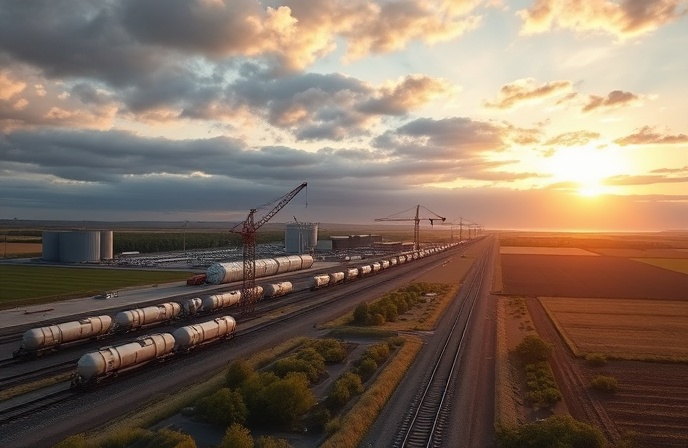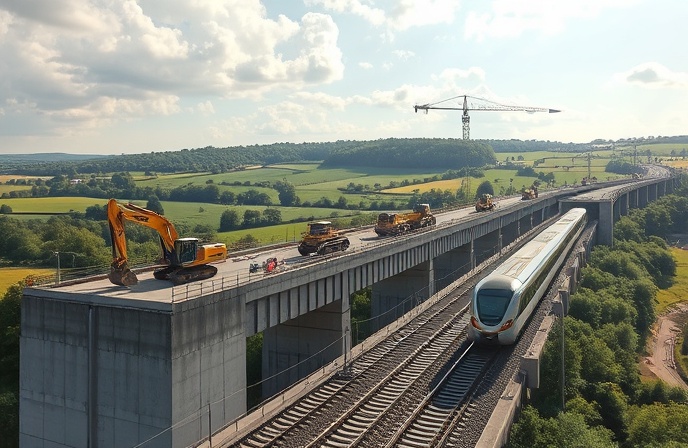Kochi Metro Expansion: Linxon’s Power Solution

This article explores the significant expansion of the Kochi Metro Rail Limited (KMRL) system in Kochi, India, focusing on the crucial role of Linxon in providing the complete power supply package for the Petta-Thripunithura Corridor extension. The project highlights the complexities of integrating a new section into an existing rapid transit system, emphasizing the critical nature of reliable and efficient power supply infrastructure for urban mass rapid transit (UMRT) operations. We will delve into the scope of Linxon’s turnkey contract, analyze the technological aspects of the 750V DC third rail system, and consider the broader implications of this project for the Indian rail sector and international best practices in rail electrification. Finally, we will examine the project’s contribution to the sustainable development goals for India’s growing urban population. The success of the Kochi Metro expansion serves as a case study for future UMRT projects globally, demonstrating the importance of streamlined project management and integrated power solutions for effective implementation.
Linxon’s Turnkey Solution for Kochi Metro Expansion
Linxon, a global provider of power solutions, secured a contract with KMRL to deliver a comprehensive power supply package for the Kochi Metro’s extension. This turnkey project encompasses all aspects of the electrical infrastructure, from design and engineering to procurement, construction, testing, and commissioning. The scope of work includes the design, engineering, procurement, and construction (EPC) of a new traction substation (a substation that supplies power to electric trains) and an auxiliary substation (providing power for non-traction purposes). The centerpiece of the project is the implementation of a 750V DC third rail system, providing power directly to the trains. This approach is common in many metro systems globally for its efficiency and safety. The seamless integration of this new power system into the existing Kochi Metro infrastructure necessitates meticulous planning and execution, demonstrating Linxon’s expertise in managing complex rail electrification projects.
Technological Aspects of the 750V DC Third Rail System
The adoption of a 750V DC third rail system is a significant technological aspect of the Kochi Metro expansion. This choice offers several advantages over alternative electrification methods. The 750V DC voltage is a widely used standard in many metro and light rail systems globally, offering a balance between efficiency and safety. The third rail system delivers power directly to the train’s pantograph (the device that collects power from the overhead line or third rail), minimizing energy loss and providing reliable power delivery. The selection of this system is indicative of KMRL’s commitment to using proven and reliable technology for its expansion. The consistent delivery of power is paramount to ensure the safety and reliability of the Kochi Metro’s operations, further contributing to the sustainability of this UMRT project.
Strategic Significance for the Indian Rail Sector
The Kochi Metro expansion project holds significant strategic importance for the Indian rail sector. India is undergoing rapid urbanization, and the demand for efficient and sustainable mass transit solutions is growing exponentially. The successful implementation of this project showcases the capabilities of Indian infrastructure development companies in handling large-scale, technologically advanced projects. Linxon’s involvement represents a transfer of international expertise and best practices to the Indian market. The project’s success strengthens India’s position as a key player in the global rail infrastructure market and demonstrates the country’s commitment to investing in sustainable and efficient transportation solutions. The partnership between Linxon and KMRL underscores the potential for future collaborations and the growth of the Indian rail industry.
Project Management and Sustainability
The successful completion of the Linxon project highlights the importance of effective project management in large-scale infrastructure projects. A turnkey solution, integrating all aspects of the project under a single contractor, streamlines the process and reduces the risk of delays and cost overruns. The reduction in interfaces between various stakeholders as mentioned by Linxon CEO Frédéric Tréfois, is key to project success. This approach contrasts with projects where responsibilities are fragmented, often leading to coordination difficulties. Moreover, the project contributes to India’s sustainable development goals by providing a clean and efficient mass transit option, reducing reliance on private vehicles and lowering carbon emissions. The focus on sustainability extends beyond the technological aspects of the project to the project management approach itself. The efficient execution contributes to overall sustainability by minimizing waste and optimizing resource use.
Conclusions
The Kochi Metro’s Petta-Thripunithura Corridor extension, powered by Linxon’s comprehensive power supply package, represents a significant milestone in India’s urban transportation development. The project’s success hinges on several key factors: Linxon’s provision of a turnkey solution, encompassing design, engineering, procurement, construction, testing, and commissioning, streamlined the process and minimized interface challenges. The adoption of a 750V DC third rail system reflects a commitment to proven technology and efficient power delivery, essential for the reliability and safety of the UMRT system. Furthermore, the project’s strategic importance for India’s rail sector is undeniable, showcasing the nation’s growing capabilities in handling complex, large-scale infrastructure projects and promoting the transfer of international expertise. Finally, the project contributes meaningfully to the nation’s sustainable development goals by providing a clean and efficient mass transit option that reduces reliance on private vehicles and lowers carbon emissions. This success story serves as a model for future UMRT projects, both within India and internationally, demonstrating the crucial role of integrated power solutions and efficient project management in achieving sustainable urban development.


